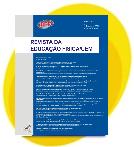Active commuting to school and associated factors among adolescents: A systematic review
Keywords:
Adolescent. Body composition. Motor activity. Physical fitness.
Abstract
Physical inactivity, considered a worldwide public health problem, has become a common behavior among adolescents. This systematic review aimed to examine the scientific evidence analyzing commuting to school in adolescents and its association with sociodemographic factors, body composition, physical activity and cardiorespiratory fitness. Articles were selected through the literature available in electronic databases (Medline, Cinahl and Web of Science). Twenty three observational studies, with samples composed of adolescents (10-19 years), all published in english language, from 2003 to 2014, were included. The majority of investigations had as main focus the active commuting and the highest prevalence of this outcome were found among boys, younger adolescents, those from lower income families and whose mothers had lower educational level. Adolescents with a healthier body composition and those with higher levels of physical activity and cardiorespiratory fitness were the most active in commuting from home to school. Despite the association between active commuting to school and better health conditions, it is necessary to encourage it among adolescents of better economic conditions, females and the older ones.Downloads
Download data is not yet available.
Metrics
Metrics Loading ...
Published
2017-05-15
How to Cite
1.
Pinto A de A, Claumann GS, de Angelo HCC, Menezes EC, Dias DT, Pelegrini A. Active commuting to school and associated factors among adolescents: A systematic review. JPhysEduc (Maringá) [Internet]. 2017May15 [cited 2026Jan.9];28(1):e-2859. Available from: https://periodicos.uem.br/ojs/index.php/RevEducFis/article/view/36683
Issue
Section
Review Articles
• Authors retain the copyright and full publishing rights without restrictions.

This work is licensed under a Creative Commons Attribution 4.0 International License.









_1502.jpg)











